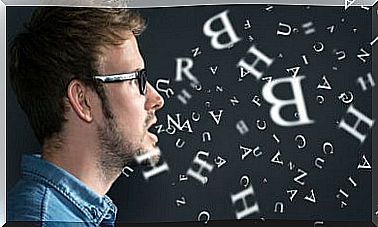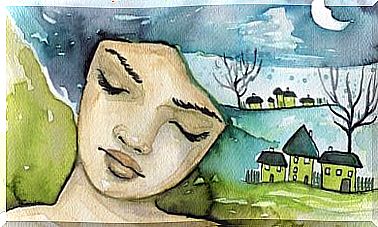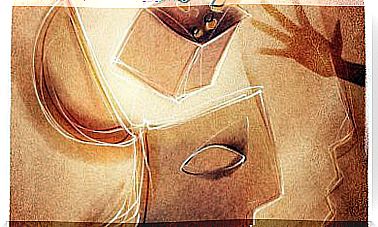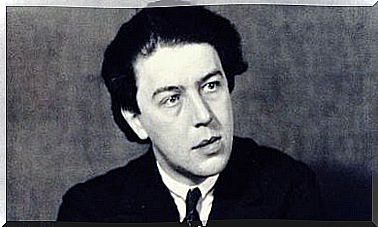Stroop Test, A Color-based Psychological Test
The Stroop test was first published in 1935 and is still current. It is a test to measure people’s attentional control using an interference system. To produce it, they may be asked, for example, to read a series of color names written in a different tonality than the one they designate. Something so simple actually contains a certain degree of difficulty.
This is one of the most common and popular psychological tests. Its age and the large number of studies it has behind it is especially striking. It was, in fact, JM Cattell who realized something relevant in 1886. The human being discriminates colors before words. The reading process is more complex and undoubtedly requires a higher level of attention and concentration.
It would be the experimental psychologist John Ridley Stroop who would go much deeper into the relationship between cognition and inference, coining what is known as the stroop effect . This idea can be summed up in the difficulty we have, for example, when reading the word ‘green’ written in red. Something like this generates a high difficulty, to the point of being able to evaluate neuropsychological problems.
Let’s see more data below.
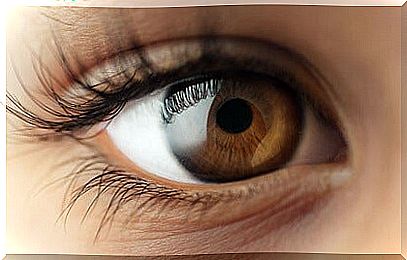
Stroop test, what does it measure?
The Stroop test or test of colors and words is an attentional test that assesses the ability of people to classify information from the environment and react selectively to that information.
- It is a very common instrument in neuropsychological practice, especially to identify students with attention deficits with or without hyperactivity, to evaluate people with dementia with brain damage or even to measure the way in which stress affects our attentional processes.
- On the other hand, studies such as those carried out by José Pardo and Patricia Jenner, from the University of Minnesota, show us that the brain area linked to the Stroop task is the anterior cingulate cortex and the dorsolateral prefrontal cortex.
- In these structures, processes related to memory, attention, reading and color discrimination are concentrated.
How is the Stroop test applied?
If the Stroop test is known for something, it is for its simplicity in its use and application.
- It is administered on an individual basis.
- It has a short duration that does not go beyond 15 minutes.
- It is applied in subjects who have already acquired the reading process, so that, on average, it is used in people between 7 and 70 years of age.
- The Stroop test consists of three sheets containing 100 items.
- The purpose is for the subject to be able to reduce their impulses or that first automatic response that usually arises when viewing the plates. The most common, for example, is that we make the classic mistake of reading ‘green’ if the word is written in this color.
- The Stroop test measures selective attention as well as processing speed.
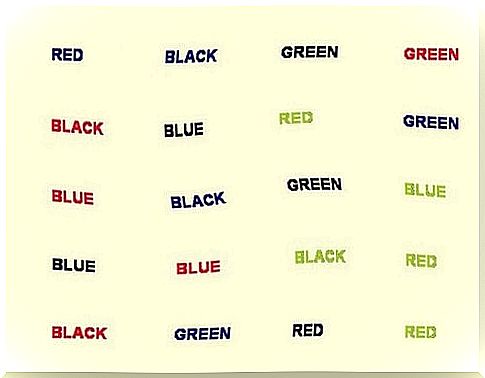
The three tasks that make up the color and word test
The Stroop test consists of three very specific as well as simple phases. It is about three very different sheets and in each one of them there are 5 columns with 3 elements. What the subject must do in each of them is the following.
First phase: reading
The first task is the simplest and with it, you try to break the ice and, in turn, perform the introduction to this attentional test. To do this, the person is provided with a list where three words are arbitrarily repeated: red, blue and green. The difficulty is that these words are written in black and the goal is not to make mistakes and to do it quickly.
Second phase: what color is it and what shape is it?
In this second phase, the subject is given a second card where he will see a series of figures with different shades. The objective is simple, although not without some difficulty in case we are not paying attention. The person is asked to first identify the color of each figure. Then have him say what symbol or figure it is (a square, a cross …).
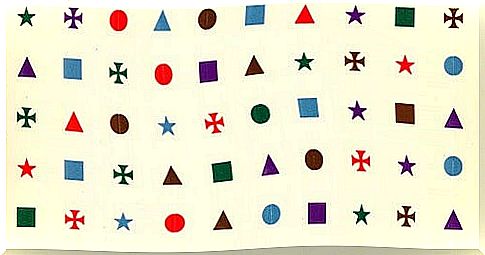
Third phase: the task of inference
The third task is undoubtedly the best known. In this card there is a set of words that appear in different colors: red, blue and green. The purpose is for the person to be able to read each word without making mistakes and quickly. The difficulty of course is that these terms are names of colors, where each tonality with which they are written does not correspond to its original meaning.
How is the Stroop test evaluated?
Two variables are used to evaluate the Stroop test: number of correct answers and response time. Both factors are important, because we can have, for example, people who spend an excessive number of time to perform a single task. The professional must therefore take into account all the data, including the difficulty in understanding the instructions (something common in the case of dementia or drug abuse).
On average, the Stroop test is very useful for evaluating executive functions in patients with Alzheimer’s, schizophrenia, or Huntington’s chorea, where damage to the anterior cingulate and prefrontal cortex is usually progressive and evident. As we can see, we are facing a type of instrument as simple as it is useful that despite the time it has been with us, it is still valid and above all effective.
